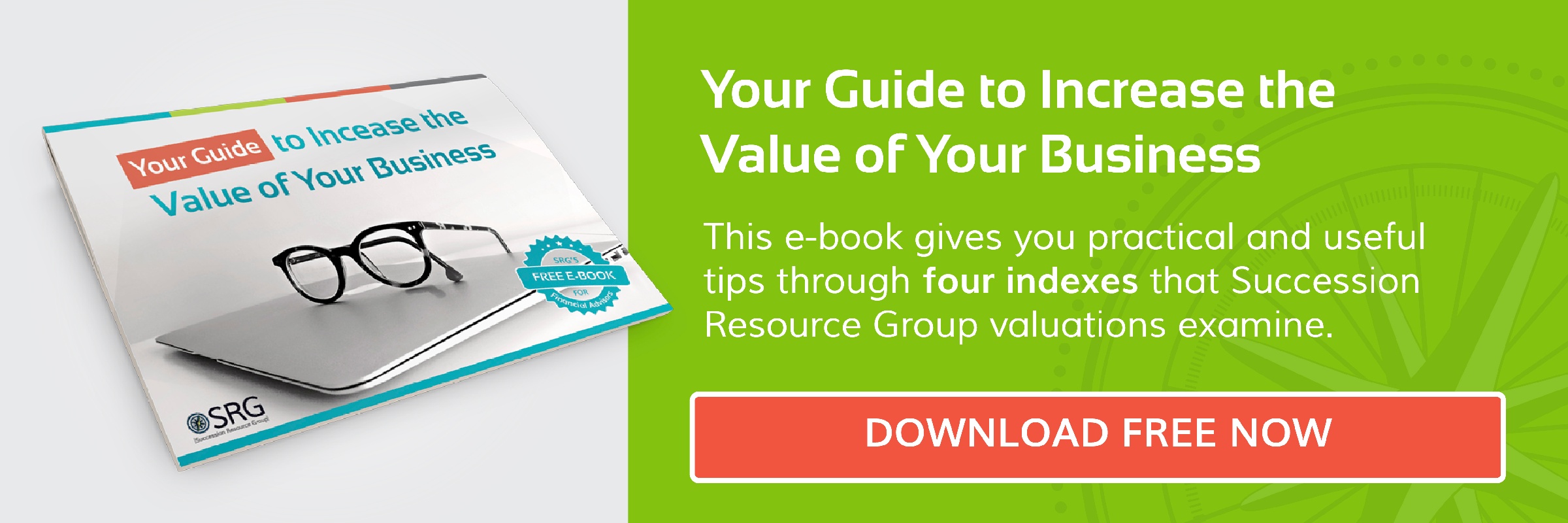AGE MATTERS
Age matters – we all hope it doesn’t, but the reality is that the age of your clients and their corresponding assets can have a drastic effect on the value of your business. An aging business is a dying business in the eyes of a buyer who is considering the long-term buying potential of the your book of business. One of the most important things to increase the value of your business, and one of the most difficult items to change, is the age of your clients and the amount of multi-generational planning that takes place in your company.

THE PROBLEM
Many advisors have a concentration of clients over the age of 70 – even if a minority – these clients often have a disproportionate amount of the total assets under management. These clients are viewed by a buyer as higher-risk based on factors like: RMDs (Required Minimum Distributions), clients drawing down on their accounts, passing money down to heirs, have little to no potential for an increase in assets, advancing charitable donations, and unfortunately having a shorter life expectancy. The inverse is also true. While having a younger demographic (clients under the age of 50) will help increase your value from one perspective, having a high concentration of these clients may ultimately decrease the value in terms of assets per client and revenue per client as these clients are still typically in growth mode. So, how do you effectively mitigate this perceived risk?
- Multi-Generational Planning – Build a practice that targets your older client’s children and grandchildren to reduce some of the risk a buyer would perceive with an older client base. This will not typically happen quickly, but advisors that have made a conscious effort to bring the heirs of their current clients into the practice have received a premium sales price and have experienced greater retention of client assets upon death. This effort to attract the next generation of wealth is accelerated when you have a succession plan and “younger” successors, since the average age of an advisor tends to mirror the age of their clients.
- Trust & Estate Planning – While partnering with estate planning attorney’s/CPAs can be more complicated due to varying rules and regulations that must be followed, encouraging your clients to plan ahead can mitigate the risk of older clients assets leaving. Trust and estate planning will also extend beyond the client’s life, will aid in multi-generational planning, will provide an ongoing revenue stream, may increase your client base, and will help you manage additional assets for the beneficiaries of the trust.
- Maximizing Potential – From a buyer’s perspective, it is easy to see why they would pay a premium for clients under the age of 70. The “younger” age groups are generally those with the highest/best earning potential. In addition, these younger clients are more attractive to a buyer given their longevity and many advisors are using account aggregation software to track outside assets of these younger clients to assist in future revenue generation opportunities. If you can show that your 50 to 70 year-old clients have millions of dollars in potential 401(k) rollovers or stock options that will come to you once they retire, then a buyer will place more value on these specific clients. The more potential that you can quantify for a purchaser (often greater for younger clients), the greater the value you will receive.
To a buyer/successor, the future earning potential of the business is paramount in how they value a business. The more risk a buyer sees in the demographics of your client base, the lower the value will be when you execute a deal or the greater contingent financing you are likely to receive (i.e., less money down at closing and a variable payment stream). While there is no magic solution to make your clients younger, active and ongoing management of the practice and increased awareness of the potential issues, will allow you to take steps to optimize your practice’s value to ensure you talk to the best possible successors when the time comes.
